OFweek smart home network news: whether or not you use the new air system, air purifier is a must-buy product, both with the best results. Faced with the plethora of purifiers on the market today, friends who don’t understand are definitely aggressive and don’t know how to choose. But as long as you choose according to the following steps I gave you, you can buy a purifier product that meets your needs.
Air Purifier Selection Step 1: Look at Demand
What is the purpose of the purchase of purifiers? Of course, filtering PM2.5 is one of its most important functions, but the next thing is to remove odors such as cigarettes, remove formaldehyde, remove allergens, and so on, which is also what air purifiers can do. Another factor is the size of your area of ​​use, whether or not the purifier needs to be moved frequently, etc. Whether or not you need to put a purifier in each room will directly affect your budget.
Air purifier chooses the second step: look at the purification method
Generally speaking, we refer to home air purifiers, which are divided into two types: electrostatic type and mechanical type. The principle is more detailed here than that. We use simple words to explain. The mechanical type is that the fan blows the dirty air through the filter screen, the pollutant particles are blocked by the filter, and the clean air is blown out from the other side of the filter screen to achieve the effect of air circulation purification. In the electrostatic purifier, a strong electric field is added in the purifier space, and the polluted particles are charged and charged by the electrostatic precipitator to achieve the purpose of purifying the air.
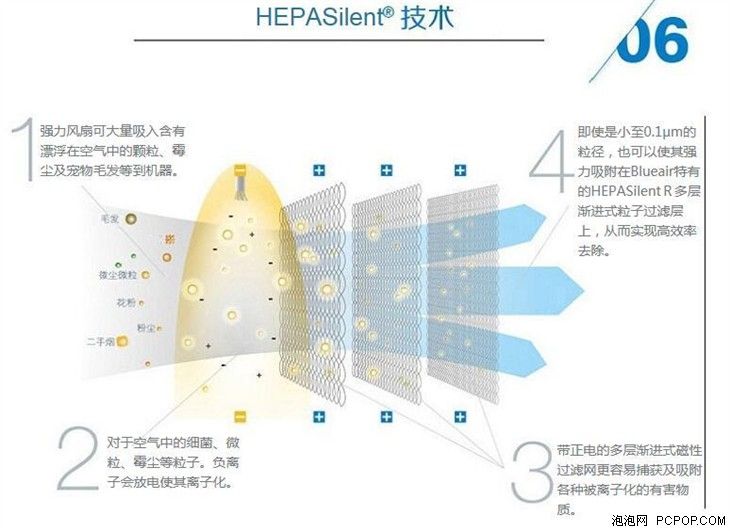
However, the disadvantages of both are also present. Compared with the electrostatic type, the mechanical cleaner has more noise and power, and the electrostatic type purification efficiency is slightly lower, and ozone is easily generated. Ozone is also an air pollutant. The secondary pollution is qualified. It also requires additional tests to determine it. Mechanical air purifiers do not have this concern.
In general, the majority of home air purifier products are now mechanical purification methods, occupy the absolute mainstream, few electrostatic products, plus ozone pollution and other factors, it is not recommended that everyone consider electrostatic air purification Device.
Air purifier chooses the third step: see the price
The price range of air purifiers is very large, ranging from a few hundred dollars to over 10,000. High-end purifiers may use higher-grade filters, quieter fans, higher purification efficiency, and more intelligent Operation method, etc. However, because the industry is not yet very transparent, and manufacturers' pricing is not as close to the cost as mobile phones, water is still relatively deep. Although an expensive air purifier has its own meaning, its advantages and price difference are not equal.
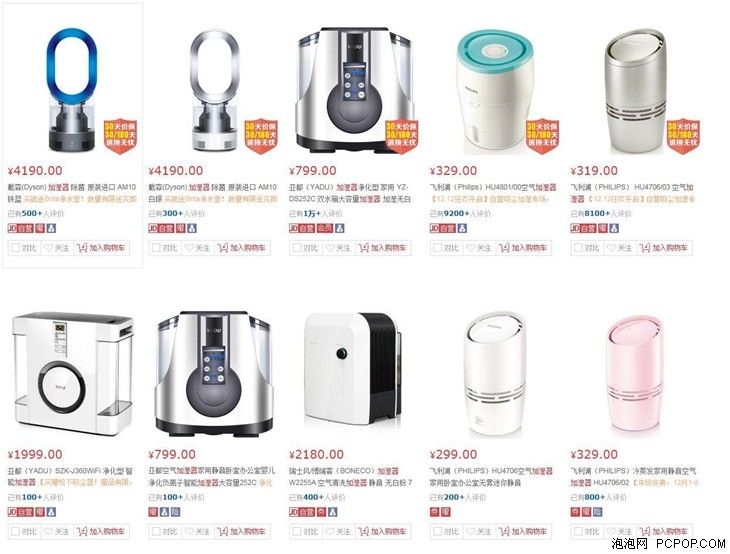
If we measure the core efficiency of the air purifier CADR, some of the more expensive products may have a CADR of about 700, but compared to the 400 or so that have a lower CADR with lower prices, they will The time for an air purification of a 30m2 living room to an excellent level may only be a 10-minute or so difference. The significance of this is that it can be a few minutes faster than a low-performance machine when the home is turned on, and the indoor air is healthy. After that, air purifiers operating at low and medium speed will be enough to maintain the indoor breathing environment for you, and the difference between high and low performance will be even more weakened. Therefore, in order to comprehensively measure current air purifier products, we generally recommend that the price level of all purchased products be under 4,000 yuan. In this price range, if you prefer, you can buy products with excellent price/performance ratio.
Air purifier choose the fourth step: choose the brand
There are many brands of air purifiers nowadays. We suggest that we should try to choose some brands that focus on air purifiers or larger integrated brands that produce household appliances. Some brands that are not even heard of even a small amount, even if their products are very cheap, also recommend careful selection. After the past two years, the outbreak of the net and net market has already entered the shuffle stage, under the impact of the new national standard. Some of the irrelevant brands will be gradually eliminated by the market. One of the problems is that you may not be able to buy filters that you have purchased. Once you do this, the purifier will be completely destroyed. Can buy another new one.
Air purifier chooses the fifth step: purification performance
One of the largest indicators of cleansing performance is CADR. The Chinese name of CADR is the clean air output. The common point is how much clean air the purifier can produce. The data unit of the CADR is m3/h, exemplified by 400m3/h, which means that it can output 400m3 of clean air per hour. From the CADR concept, this number is undoubtedly the better, and the higher the CADR value, the more clean air released in the room per unit time. Therefore, CADR can also be used to calculate the approximate area of ​​application of an air purifier.

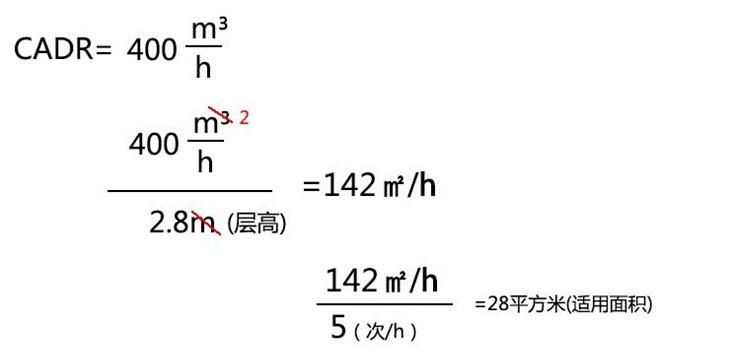
Calculated according to the international standards for indoor ventilation 5 times per hour, we recommend that the bedroom (10-20m2) choose the CADR300 about the purifier, the living room (20-40m2) select the CADR500 or so purifier, if a single The area of ​​the room is more than 60m2. It may be that one purifier is not enough.
Air purifier chooses the sixth step: noise
Noise and CADR are two contradictory indicators. Many products only mark the lowest noise and highest CADR when marking performance. But what many consumers don't know is that CADR can be as low as a few tens of thousands at the lowest noise level, and noise can be as high as 60-70 dB at the highest CADR. Therefore, under an acceptable noise, we can have a higher CADR value, and we think that this purifier has a higher availability.
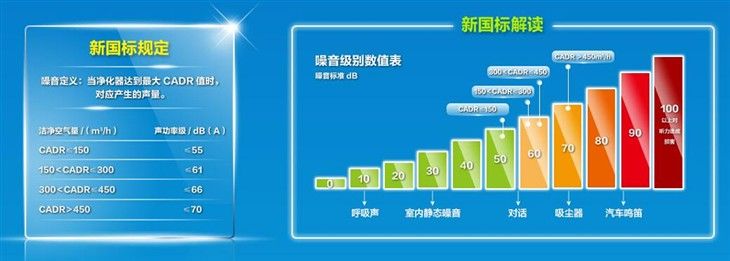

However, since the parameter identification does not currently have a uniform standard, you may not find such a parameter in many places, so I suggest you ask the customer service staff, the noise and CADR value of the product you want to select in sleep mode. How much is the difference, if this figure can be around 30 dB and 120m/h, it is a qualified level.
Air Purifier Selection Step Seven: Use Cost
The use of air purifiers has two main parts. One is power consumption and the other is filter replacement.
The energy efficiency level is very easy to understand. It is a data basis for whether a purifier can save energy. The energy efficiency part of the new national standard of the air purifier does not directly indicate the operating power consumption. It includes the purification efficiency, the energy efficiency rating is the ratio of CADR to the rated power, and it is subdivided into particulate matter purification energy efficiency and formaldehyde purification energy efficiency. Judging from the available data, the energy efficiency rating of 2 is a qualified grade, and the ratio of 5 is a high-efficiency grade. In terms of formaldehyde, a ratio of 0.5 is a qualified grade and 1 is a high-efficiency grade. Regardless of the ratio or grade, energy efficiency certification is a higher number or higher level, the more energy-efficient, very good understanding.
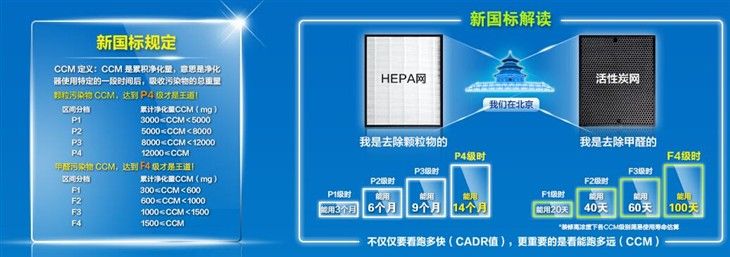

Filter replacement We need to look at a parameter called CCM, CCM is the English abbreviation of the cumulative purification amount of the purifier. It describes the total weight of pollutants that the purifier can accumulate when the filter capacity of HEPA or formaldehyde filter decays to 50%. It is mg. The new national standard data of CCM is divided into two major directions: particulate matter and formaldehyde. No matter whether CCM particles or CCM formaldehyde, the unit is all mg. When you think that remembering to clean up the total amount of data is inconvenient, you can actually understand the specifications of the filter through the CCM level. The CCM particles have four grades P1 to P4. The higher the number, the higher the accumulated quantity that can be purified. In addition, the CCM formaldehyde level is from F1 to F4, and the fourth level is described by the highest level.
Considering the cost of use, the smaller the number of energy efficiency levels purchased, the larger the number of CCMs.
Air Purifier Selection Step 8: Appearance
Appearance is a major aspect of personal preferences, placed in a conspicuous position at home all year round. A product that looks pleasing to the eye can stimulate your desire to use it. Of course, it is also related to the size of the home where you can position, so if a small area home purchases a purifier, it is also necessary to look carefully at the size.
Air Purifier Selection Step 9: Additional Features
Now many purifiers, especially mid- to high-end products, will have a lot of additional features. This will need to determine whether you need to spend money in these places based on your usage needs and environment. For example, Panasonic and Sharp's purifiers have a humidifying function. Its vaporization and fog-free humidifying function is very suitable for use by northern residents in the dry winter. This humidification method does not bring ultrasonic atomization humidifiers to humidify harmful substances in water. The air is released into the room.
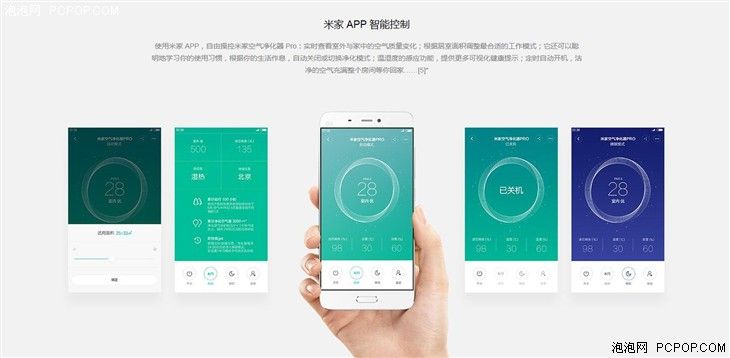
The other is to consider whether or not an “intelligent†purifier is needed. The purifier is obviously an important part of building a smart home. At present, the simplest remote control can be realized in many products. The purifier is opened within half an hour before arriving home and the door is closed. You can enjoy clean air, which is a good use scenario.
Air Fryer,Air Fryer Oilless With Non-Stick,Air Fryer Oven,Oil Free Cooking Air Fryer
Shandong Sangle Group Co.,Ltd. , https://www.sangle-group.com